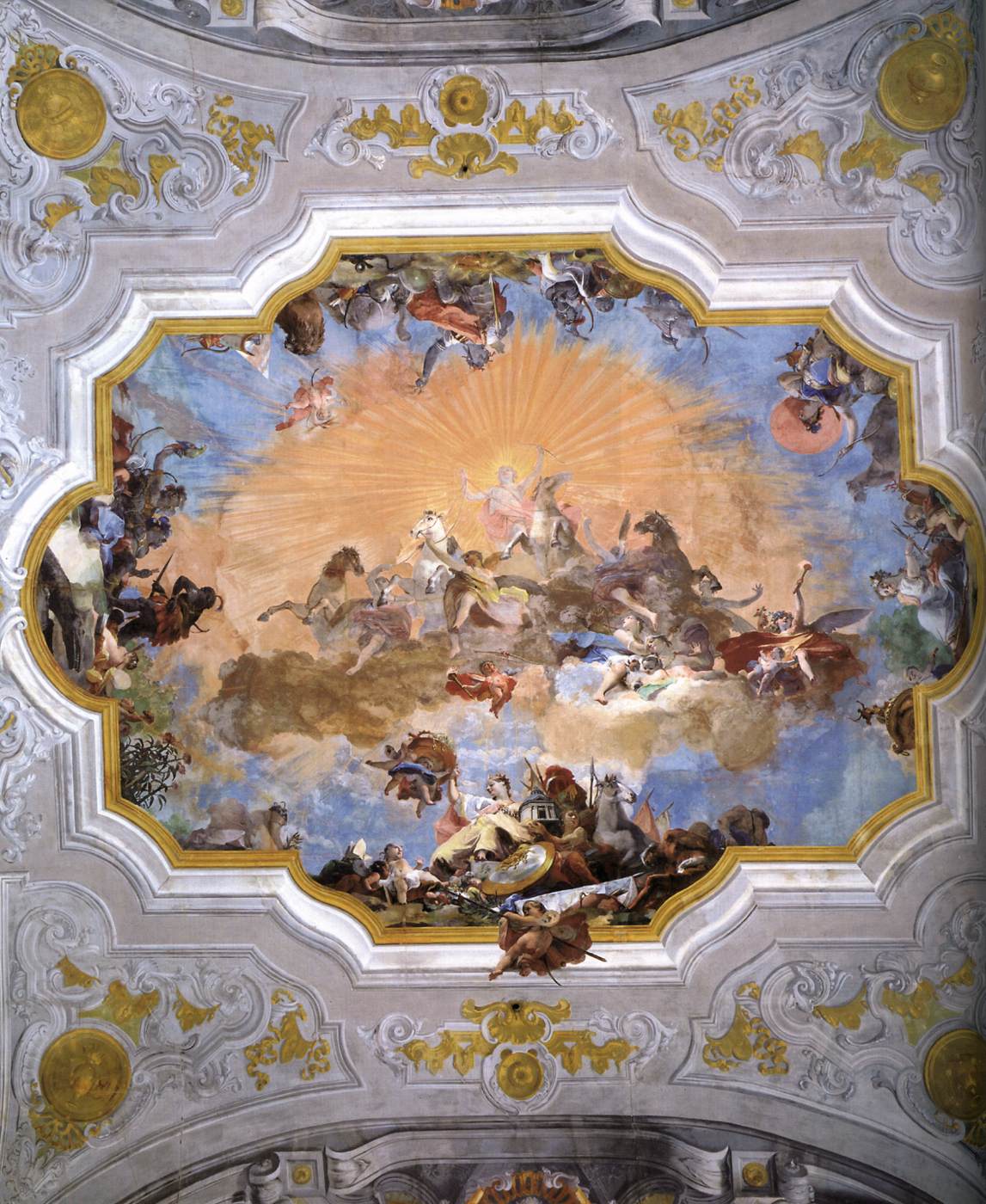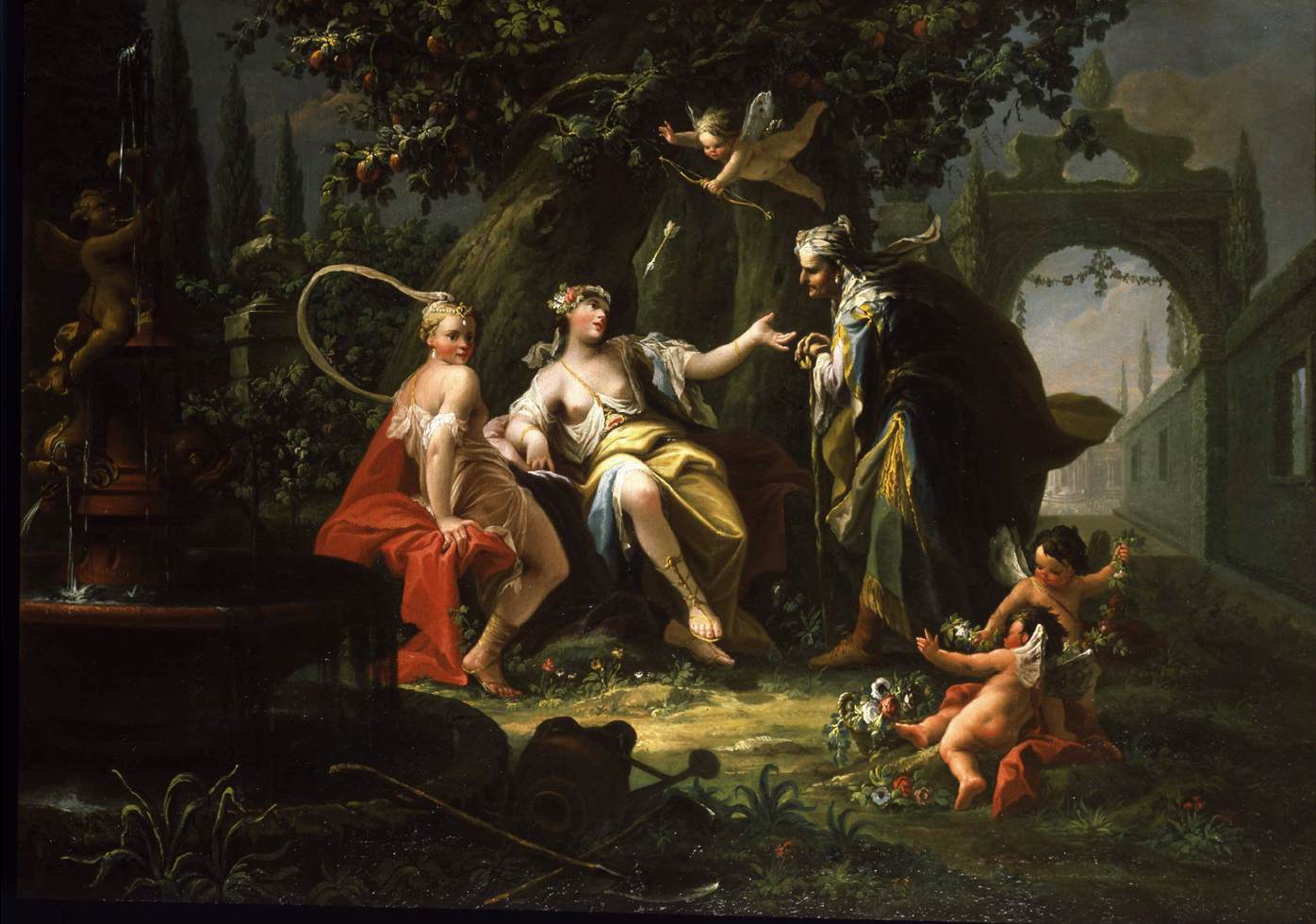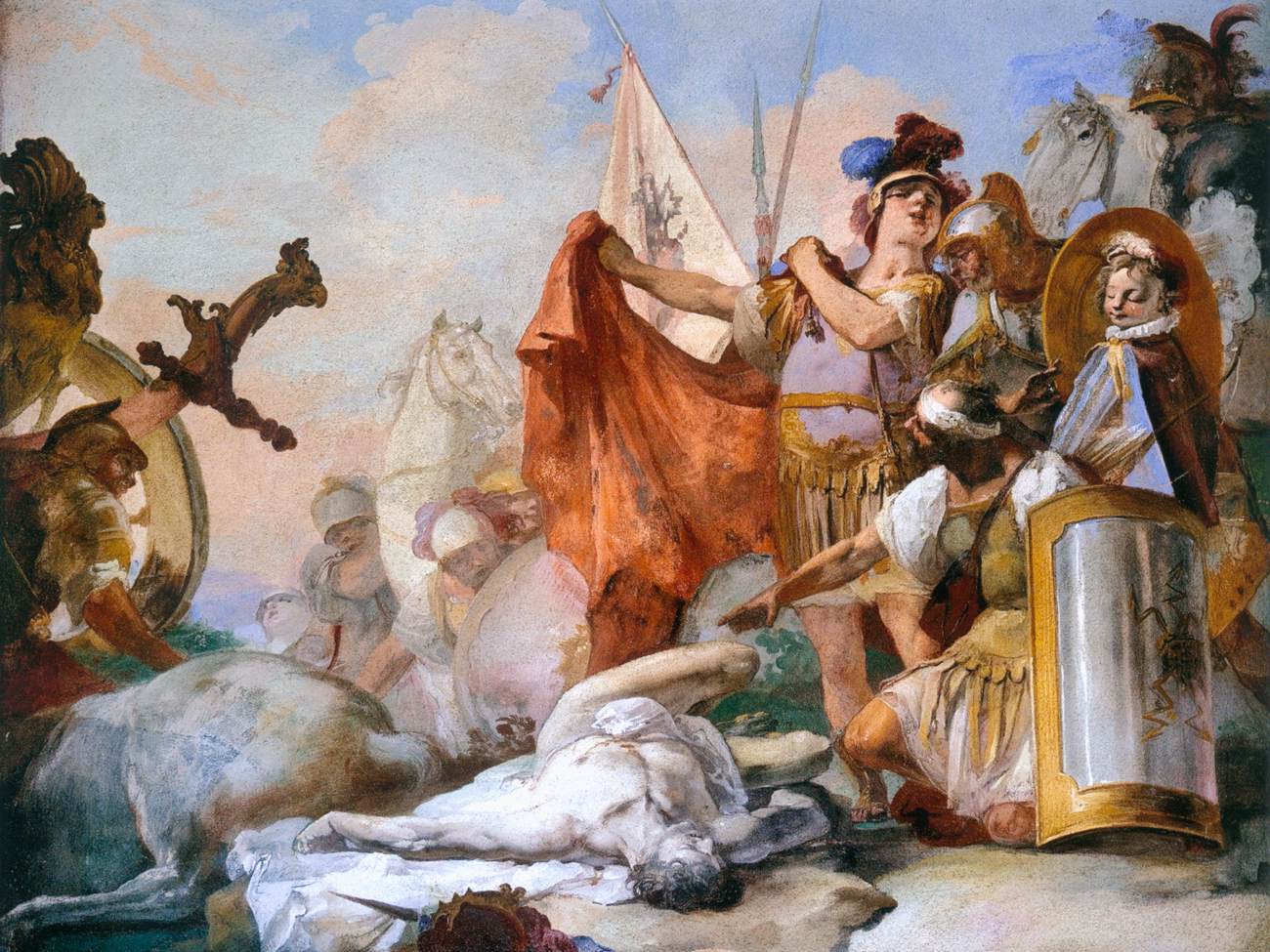Italian painter and stage designer. His earliest known work, the Flagellation of Christ (c. 1706; Venice, Museo Diocesano S Apollinia), for the Scuola del Cristo of S Marcuola, is a dark, shadowy painting that reveals the strong influence of tenebrist trends of the 17th century. Crosato, however, belonged to the generation of Venetian painters such as Jacopo Amigoni, Sebastiano Ricci and Giovanni Antonio Pellegrini, who were developing a lighter, more colourful style. His tonality changed from the darkened shadows of the Flagellation to the light-filled frescoes for Stupinigi, the hunting palace of the Duke of Savoy, near Turin, which constitute his next known work. The most successful of these, the Sacrifice of Iphigenia (begun 1733), on the vault of the antechamber of the queen's apartment, is a highly dramatic work full of bright bold colours accentuated against the blue sky and white clouds. The gold, blue and red tones are effectively placed so as to lead the eye around the room and guide it through the narrative, which is related through the specific gestures or glances of a few figures, at the same time suggesting the idea of greater numbers. Equally direct is Crosato's use of sharply defined, highly saturated colours, which remain constant in their intensity and effective in providing visual unity; his linear style defines solidly modelled forms. Other rooms at Stupinigi decorated by him included the antechapel of S Umberto, with figures of hunters and lady companions, and the Sala degli Scudiere, with the story of Apollo and the Python on the ceiling. These works established Crosato's career in Savoy. He received further commissions for fresco cycles in the vestibule of the Villa Regina and in the Palazzo Reale in Turin.
Between 1752 and 1756 he painted the frescoes in the ballroom of the Ca' Rezzonico in Venice, together with the trompe l'oeil painter Pietro Visconti. The fresco in the middle of the ceiling and the fine monochromes at the centre of each wall, however, are by Giovanni Battista Crosato. The former shows Apollo's Carriage rising in flight, drawn by four white horses and surrounded by a jumble of allegorical figures, to bring light to all parts of the world (indeed, representations of Europe, Asia, America and Africa appear at the sides) the latter, with mythological episodes featuring Apollo, evidently make up a kind of illustrated poem in honour of the Rezzonico family.
//
![]()









